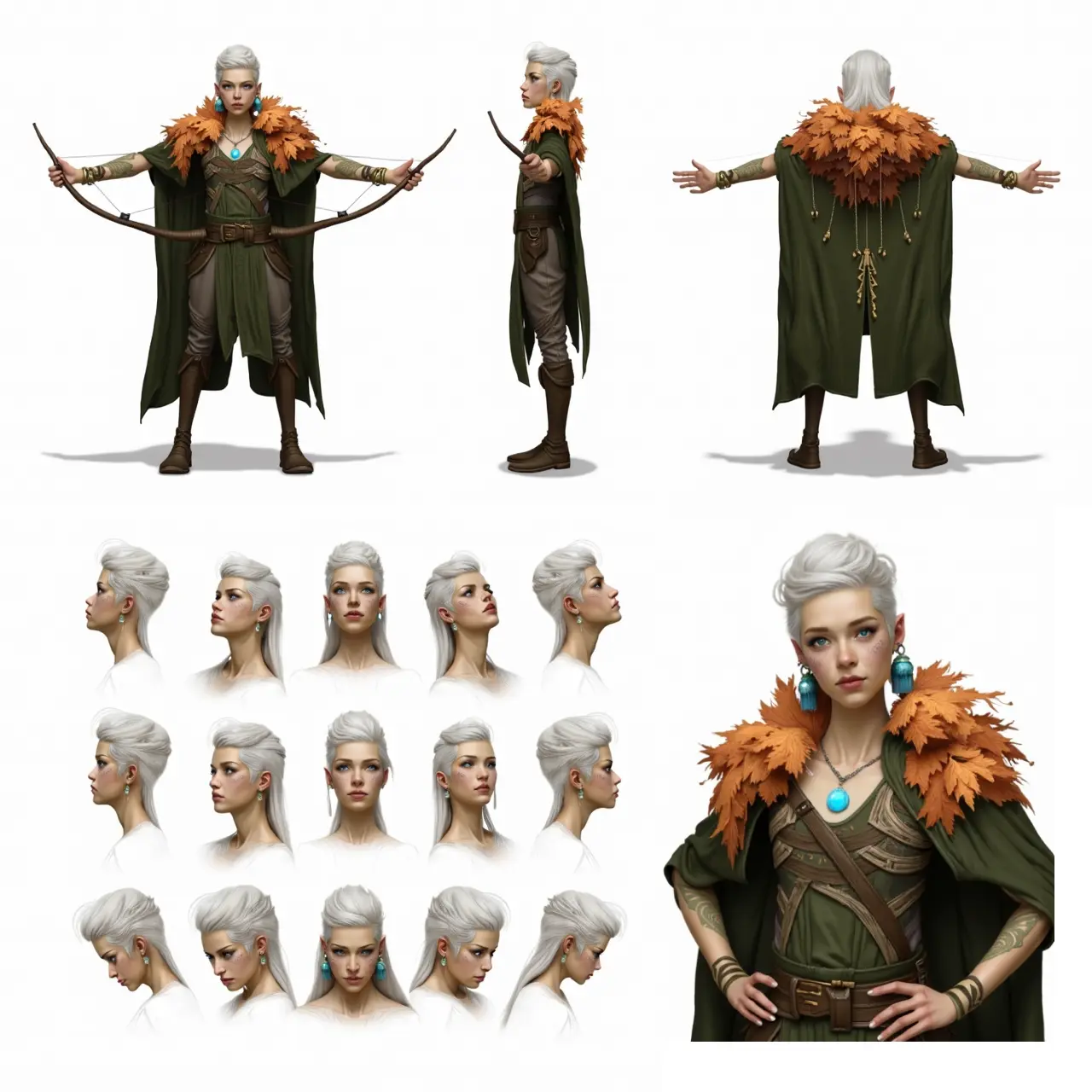ComfyUI Node: Lumina T2I Sampler
LuminaT2ISampler
CategoryLuminaWrapper
kijai (Account age: 2467days) Extension
ComfyUI-LuminaWrapper Latest Updated
2024-07-31 Github Stars
0.19K
How to Install ComfyUI-LuminaWrapper
Install this extension via the ComfyUI Manager by searching for ComfyUI-LuminaWrapper- 1. Click the Manager button in the main menu
- 2. Select Custom Nodes Manager button
- 3. Enter ComfyUI-LuminaWrapper in the search bar
Visit ComfyUI Online for ready-to-use ComfyUI environment
- Free trial available
- 16GB VRAM to 80GB VRAM GPU machines
- 400+ preloaded models/nodes
- Freedom to upload custom models/nodes
- 200+ ready-to-run workflows
- 100% private workspace with up to 200GB storage
- Dedicated Support
Lumina T2I Sampler Description
Specialized node for text-to-image sampling using Lumina model, leveraging advanced ML for high-quality image generation.
Lumina T2I Sampler:
The LuminaT2ISampler is a specialized node designed to facilitate text-to-image (T2I) sampling using the Lumina model. This node leverages advanced machine learning techniques to generate high-quality images based on textual descriptions provided by the user. The primary goal of the LuminaT2ISampler is to bridge the gap between textual input and visual output, enabling AI artists to create detailed and accurate images from their textual prompts. By utilizing this node, you can achieve a seamless and efficient workflow for generating images that align closely with your creative vision, making it an invaluable tool for AI-driven art creation.
Lumina T2I Sampler Input Parameters:
lumina_model
This parameter specifies the Lumina model to be used for the text-to-image sampling process. The model contains the necessary weights and configurations required to generate images from textual descriptions. It is crucial to ensure that the correct model is loaded to achieve the desired output quality.
lumina_embeds
This parameter represents the embeddings generated from the textual input. These embeddings capture the semantic meaning of the text and are used by the model to guide the image generation process. The quality and relevance of the embeddings directly impact the fidelity of the generated images.
latent
The latent parameter refers to the latent space representation of the image. This is an intermediate representation that the model uses to generate the final image. The latent space is manipulated during the sampling process to produce variations in the output image.
seed
The seed parameter is an integer value used to initialize the random number generator. This ensures reproducibility of the generated images. By using the same seed value, you can generate the same image multiple times. The default value is 0, with a minimum of 0 and a maximum of 0xffffffffffffffff.
steps
This parameter defines the number of steps to be taken during the sampling process. More steps generally lead to higher quality images but also increase the computation time. The default value is 20, with a minimum of 1 and a maximum of 10000.
cfg
The cfg (classifier-free guidance) parameter controls the strength of the guidance applied during the sampling process. Higher values result in images that more closely match the textual description but may also introduce artifacts. The default value is 8.0, with a minimum of 0.0 and a maximum of 100.0.
proportional_attn
This parameter determines whether proportional attention should be applied during the sampling process. Proportional attention helps in focusing on different parts of the text based on their importance, leading to more accurate image generation.
solver
The solver parameter specifies the algorithm used to solve the optimization problem during the sampling process. Different solvers may produce different results, and selecting the appropriate solver can impact the quality and style of the generated images.
t_shift
This parameter allows for temporal shifting during the sampling process. Temporal shifting can introduce variations in the generated images by altering the timing of certain operations within the model.
do_extrapolation
The do_extrapolation parameter determines whether extrapolation should be performed during the sampling process. Extrapolation can help in generating images that extend beyond the original scope of the textual description, providing more creative freedom.
scaling_watershed
This parameter controls the scaling and watershed operations applied during the sampling process. These operations can affect the overall structure and composition of the generated images.
keep_model_loaded
The keep_model_loaded parameter is a boolean flag that indicates whether the model should remain loaded in memory after the sampling process is complete. Keeping the model loaded can save time when performing multiple sampling operations in succession.
Lumina T2I Sampler Output Parameters:
samples
The samples output parameter contains the generated images in their latent space representation. These samples can be further processed or converted to visual images for display. The quality and relevance of the samples depend on the input parameters and the model used.
Lumina T2I Sampler Usage Tips:
- Experiment with different seed values to explore a variety of image outputs from the same textual description.
- Adjust the steps parameter to balance between image quality and computation time. More steps generally yield better results.
- Use the cfg parameter to fine-tune the guidance strength. Higher values can produce images that closely match the text but may require careful adjustment to avoid artifacts.
- Leverage the proportional_attn parameter to improve the focus on important parts of the text, leading to more accurate image generation.
Lumina T2I Sampler Common Errors and Solutions:
"Model not loaded"
- Explanation: This error occurs when the specified Lumina model is not properly loaded.
- Solution: Ensure that the correct model is specified and that it is properly loaded before initiating the sampling process.
"Invalid seed value"
- Explanation: This error occurs when the seed value is outside the acceptable range.
- Solution: Verify that the seed value is within the range of 0 to 0xffffffffffffffff and adjust it accordingly.
"Insufficient steps"
- Explanation: This error occurs when the steps parameter is set too low, resulting in poor image quality.
- Solution: Increase the steps parameter to improve the quality of the generated images.
"CFG value out of range"
- Explanation: This error occurs when the cfg parameter is set outside the acceptable range.
- Solution: Ensure that the cfg value is within the range of 0.0 to 100.0 and adjust it accordingly.
Lumina T2I Sampler Related Nodes
RunComfy is the premier ComfyUI platform, offering ComfyUI online environment and services, along with ComfyUI workflows featuring stunning visuals. RunComfy also provides AI Playground, enabling artists to harness the latest AI tools to create incredible art.



